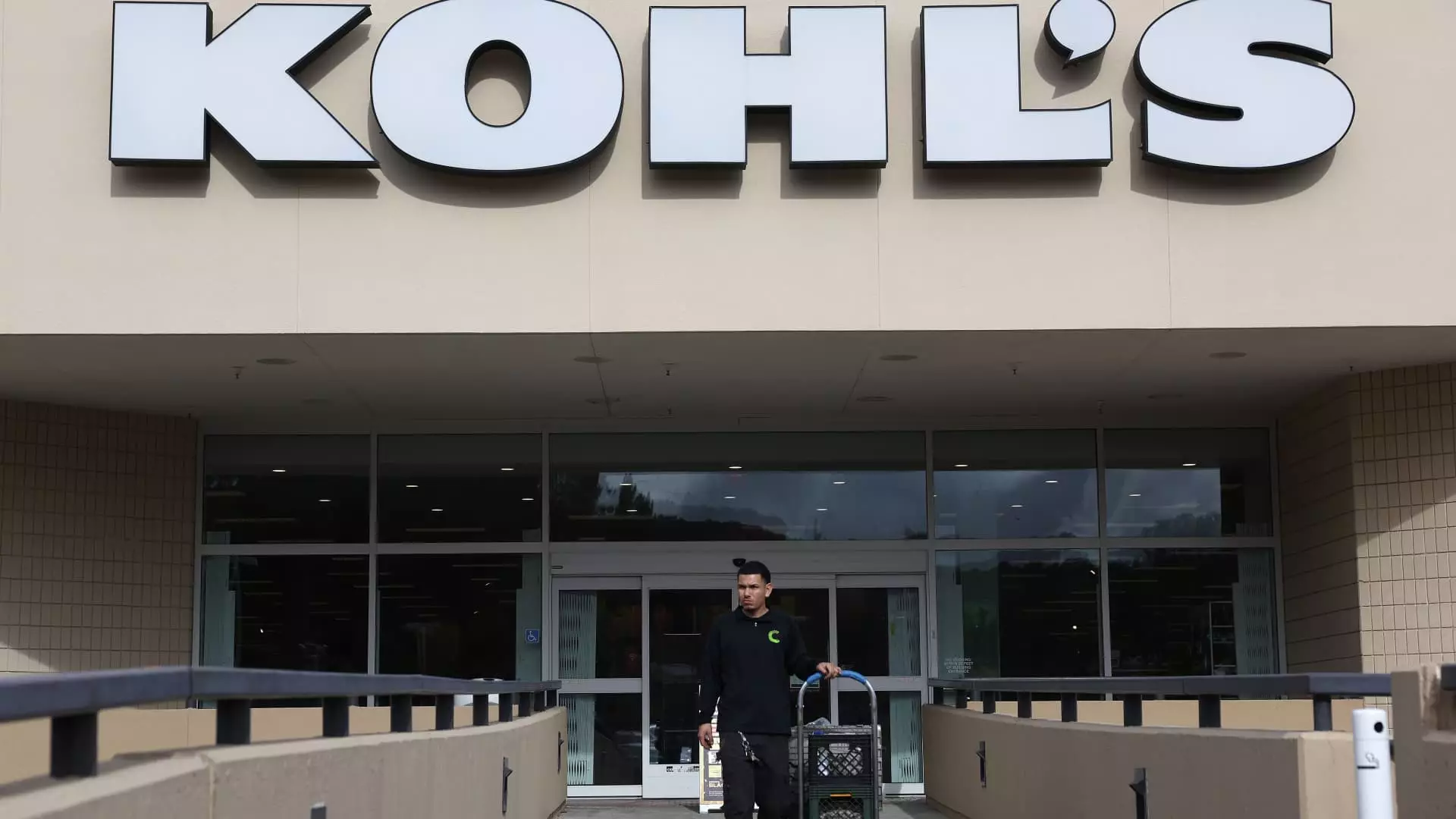Kohl’s recently reported earnings for the fiscal fourth quarter that seemed to dance around the edges of success, only to reveal a foreboding specter lurking beneath. The company outperformed expectations in earnings per share, posting 95 cents adjusted compared to the forecast of 73 cents. However, this faint glimmer was quickly overshadowed when the retailer coughed up a dismal forecast for 2025. Wall Street had estimated a mild revenue decrease of 1.6%, but Kohl’s projections far exceeded this pessimism, anticipating a drop of 5% to 7%. Such expectations understandably rattled investor confidence, leading to a shocking plunge of more than 20% in share prices on the day of the announcement.
Kohl’s has outmaneuvered some short-term hurdles, yet, the overarching narrative remains troubling. Their commitment to progressive changes has yielded negligible results, and as the days of incremental recovery evolve, the message is clear—something is fundamentally amiss with how the company conducts its business.
A Self-Inflicted Wound?
The reflections of Kohl’s new CEO, Ashley Buchanan, during a recent earnings call raise more than a few eyebrows. Buchanan pointedly admonished past management for its ill-fated focus on diversifying into new categories at the expense of core products. The de-emphasis on items like fine jewelry and petite clothing has polarized loyal customers, many of whom are now finding it increasingly challenging to engage with a brand they once adored. If you need to dig deep into a company’s psyche, statements like, “we’re kind of making it hard for them to love us,” by Buchanan are both revealing and alarming.
Moreover, Buchanan noted the company’s restrictive coupon policies, which served to both frustrate and alienate existing customers. The exclusion of well-loved brands from promotions has only added to the disillusionment. To make matters worse, expectations to see these coupon practices reverse seem slow and tepid. It’s one thing to recognize a problem, but if action doesn’t swiftly follow, it signals deeper systemic issues that extend far beyond temporary misjudgments.
A Reflexive Market Response
In an industry already beset by uncertainties, the cut in expected earnings per share to between 10 and 60 cents—a huge deviation from the $1.23 analysts had predicted—should be interpreted as a stiff warning to other retailers hanging in the balance. The financial malaise is compounded by wider economic woes, including inflation affecting consumer spending. Lower-income customers, who historically shop Kohl’s, are now gravitating toward retailers presenting more value—something Kohl’s seems to be unprepared to capitalize on effectively.
The market’s immediate reaction—a torrential sell-off—highlights mistrust, reflecting not just Kohl’s standing but the retailer sector as a whole. Investors have grown weary of seeing companies falter in the face of market challenges, and as the reality of a potential recession looms, confidence in even historically sturdy retail giants is beginning to fray.
The Human Factor: A Workforce in Flux
There is no denying the pressures surrounding retail, and in November, Kohl’s announced the appointment of Ashley Buchanan as CEO, following the departure of Tom Kingsbury. Such executive turnover often breeds instability, and the company’s decision to eliminate nearly 10% of its corporate workforce reveals starkly how desperate times have become. Furthermore, plans to shutter 27 underperforming stores speak volumes about the underlying turbulence facing the brand. Despite CFO Jill Timm’s insistence that many stores remain “incredibly healthy,” these closures indicate a need for radical re-evaluation of the corporate strategy.
The tension between maintaining profitable locations and closing those that no longer serve the company’s goals is a tightrope that Kohl’s must walk carefully. With numerous store leases set to expire soon, it’s a critical juncture for Kohl’s to make choices that could redefine its brand for decades to come.
The Brand Identity Crisis
Kohl’s stands at a crossroads, with corporate identity hanging in the balance. The once-celebrated department store has morphed into a brand struggling to reestablish itself at a critical juncture. While Buchanan acknowledges the loyalty of Kohl’s customer base, the troubling fact remains that those very customers feel estranged from the brand they once embraced.
There’s an urgent need for Kohl’s to come to terms with its self-imposed barriers. As appealing products and competitive promotions wane, the focus on nurturing the core of what once fostered brand loyalty must return. In a market hungry for authenticity, consumers are demanding more than just price cuts; they seek an enriching shopping experience that aligns with their preferences and lives.
As we survey Kohl’s disheartening performance, the imperative question remains: can this once-revered retailer recover its footing? Each alarming stat, each slumping share price, signals the potential reality that Kohl’s may need to undergo a radical transformation—not just in financials but in its corporate identity. It stands not only for itself but as an emblem of the long-standing shifts taking place in consumer retail.

